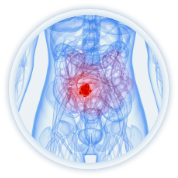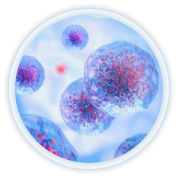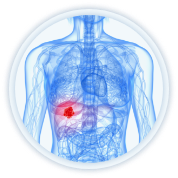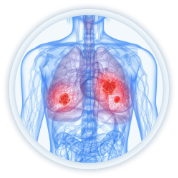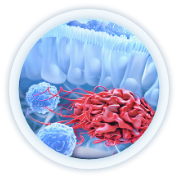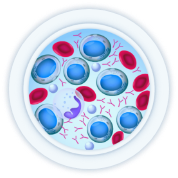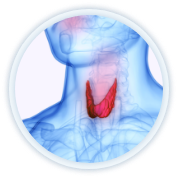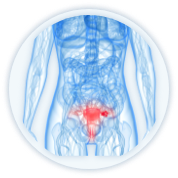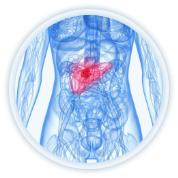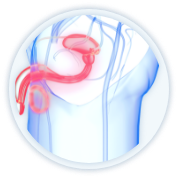At SJMC, we are committed to deliver the best practices in healthcare, stringent and uncompromising safety standards, and excellent patient care.
Our Cancer & Radiosurgery Centre stands at the forefront in cancer treatment, equipped with the latest technology for detecting, monitoring, and treating cancer, ensuring the best possible care for our patients. Specialising in cancer treatment across over 50 disciplines, SJMC utilises advanced medical systems and technologies to significantly improve diagnosis, surgical procedures, and patient care, streamlining complex cancer treatments for enhanced healthcare outcomes.

Subang Jaya Medical Centre Oncology (Cancer) Services is certified by ACHS International as a Centre of Excellence. A first in Asia-Pacific
The breast comprises various tissues and milk glands, and the ducts are connected to the nipple. Changes in the cells lining these organs can lead to cancer.
It is a cancer of the cervix. The cervix is the lowest part of the uterus that connects the body of the uterus to the vagina (birth canal). After breast cancer and colorectal cancer, it is the third most common cancer among women.
By far the most common type of cancer seen in childhood is Leukaemia. Then tumours of the Central Nervous system (Brain & spine) comes next followed by Lymphomas and Germ cell tumours.
The large intestine is made up of a long muscular tube known as the colon, and the end of this tube, called the rectum, is located adjacent to the anus.
This condition is known as leukaemia, when abnormal white blood cells are produced in the blood. In the bone marrow, red blood cells and platelets are made.
The type of cancer that affects the liver is known as hepatocellular carcinoma. Liver cancer spreads quite commonly.
When abnormal cells multiply and become out of control, they can lead to cancer. This occurs when the original tissues are transformed into a tumour.
Lymphoma is a cancer of the lymphatic system. A lymph node system consists of lymph nodes in the neck, armpits, groin, chest, and abdomen.
When abnormal cells multiply and become out of control, they can lead to cancer. This occurs when the original tissues are transformed into a tumour.
Nasopharyngeal carcinomas (NPCs), also known as nose cancers, develop in the nasopharynx. The nasopharynx is located behind the soft palate and above the nose.
Cancer of the ovaries is referred to as ovarian cancer. A female's ovaries are a pair of organs responsible for producing eggs and hormones.
Cancer of the pancreas results from developing malignant cells in parts of the organ. This may affect the function of the pancreas, including the exocrine and endocrine glands.
The prostate is part of a man’s reproductive system. It is located in front of the rectum and behind the bladder. Urine flows through the urethra, which is surrounded by the prostate. The prostate is a gland that secretes seminal fluid.
SJMC is among the first hospitals in Malaysia to embark on routine measurement of the performance of its cancer care services with results comparable to leading cancer centers in developed countries. Cancer survival is a key index of the overall effectiveness of health services in the management of patients.
In SJMC, a total of 675 patients treated between 2008 and 2012 were studied. 65% with early breast cancer, 20% with locally advanced breast cancer and 4% with metastatic breast cancer with an overall relative survival rate at 5 years of 88%. RS for stage I was 100% and for stage II, III and IV disease was 95%, 69% and 36% respectively.
Read the full report here


